What’s in Your Shed?: Contractor of the Year winner Martin Hays reveals all
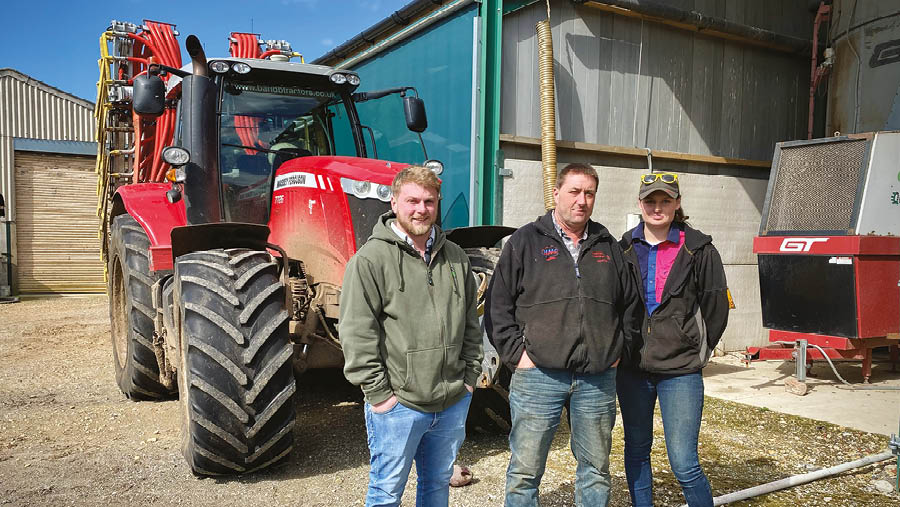 Dan Hays, Martin Hays and Lochan Channer © MAG/Oliver Mark
Dan Hays, Martin Hays and Lochan Channer © MAG/Oliver Mark Farmers Weekly’s 2022 Contractor of the Year, Martin Hays, gives us a tour of his yard.
Find out what the award winner’s favourite kit is, his best invention and his workshop essentials.
See also: Farmers Weekly Awards 2022: Contractor of the Year
Business facts
Martin Hays Contracting, Bolsover, Derbyshire
- Farm size: 185ha
- Cropping: Wheat, barley, oilseed rape, grass
- Contracting services: Mowing, raking, baling, wrapping, muck and slurry spreading, cultivating, drilling, spraying, combining and fertiliser application
- Stock: 45 Aberdeen Angus and 90 bed and breakfast dairy heifers
- Staff: Martin Hays, Dan Hays and Lochan Channer
How did you get started?
I worked for a contractor for almost eight years, until I decided that I wanted to be the boss. I bought a Case 956 XL, Welger 630 conventional baler and flat-eight sledge, and went it alone in 1995.
My real breakthrough came a year later. I knew that another local contractor had been looking at umbilical slurry spreading, which was a bit of a novelty at the time.
I also knew that he’d spent a load of money kitting up with triple mowers, so he wouldn’t be able to afford to buy anything else that year.
So, I went for broke and gambled £25,000 that I didn’t have on a complete spreading kit – pipes, trailer, pump and splash plate.
Demand for my new service was crazy and I was out every day between October and March, by which point the kit had paid for itself.
I also sprayed a lot of liquid fertiliser, which was pretty lucrative in the late 1990s and really helped me build up the business.
Whenever I branched out into a new service I started with a scrap machine, which meant that I could have a go without risking too much.
My first baler, a New Holland D1010, was a non-runner, but I battled on with it for a few years until I’d secured plenty of reliable work.
The same also applied to the combine. I took on 20ha of my own and drilled some beans but then struggled to find anyone to cut them, so I bought a 15ft-cut Claas Dominator 98.
It was a wet summer, which worked in my favour, as everyone else wanted me to do theirs and I ended up cutting 320ha with it. A couple of years later, I sold it for £1,000 more than I paid for it.
How brand loyal are you?
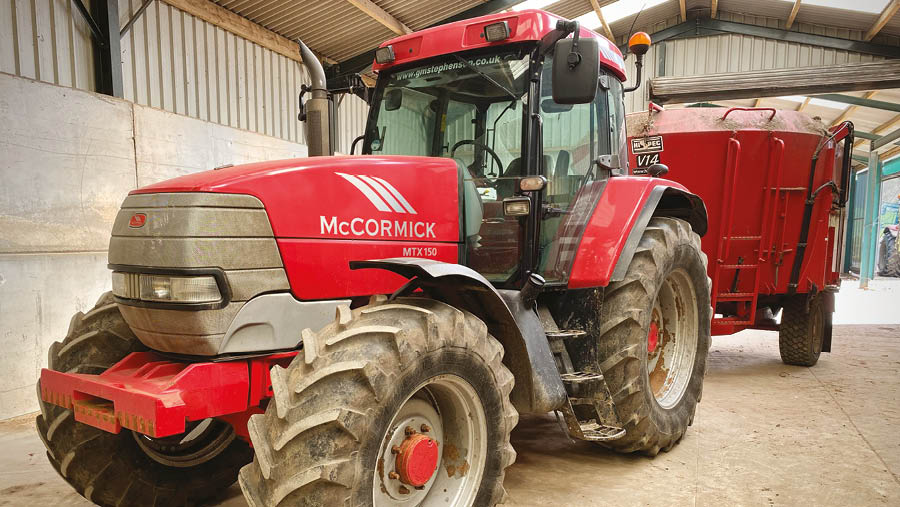
McCormick MTX 150 © MAG/Oliver Mark
I’m a fan of Massey Ferguson tractors, which I didn’t think I’d ever say. There’s nothing to dislike, they are reasonably priced and B&B Tractors, our local dealer, will always fetch a replacement if there’s a problem.
I started out with Case IH machines, MX 135s and 5150s, but when the MXMs turned into red New Hollands I went to McCormick. They were basically a Case, and I ran them from 2008 to 2016.
McCormick then lost its way, so we demoed all the alternatives. I didn’t like the fuel usage on the John Deere 6930, nor the Dyna-6 gearbox on the Massey, and the New Holland 6080 wasn’t for us, either.
In the end, we went for Claas. The Arion 640 was the first tractor with brakes and steering that felt up to doing 50kph on the road, and it was really comfortable.
We went through a few 640s and 650s, but head gasket and EGR problems followed, and a dropped valve destroyed an engine to the tune of £28,000 – thankfully covered by warranty.
That’s when we switched to Massey.
As for the implements… I’ll buy anything but I like dealing with smaller companies where you can talk to the boss or the engineers.
Favourite dealer?
Claas Eastern provides fantastic backup, though we only deal with them for the combine now.
B&B Tractors is great too, as is Gary Needham at Big Bale Services. His knowledge is invaluable when we’re pulling our hair out when under pressure in the summer.
Favourite piece of kit?
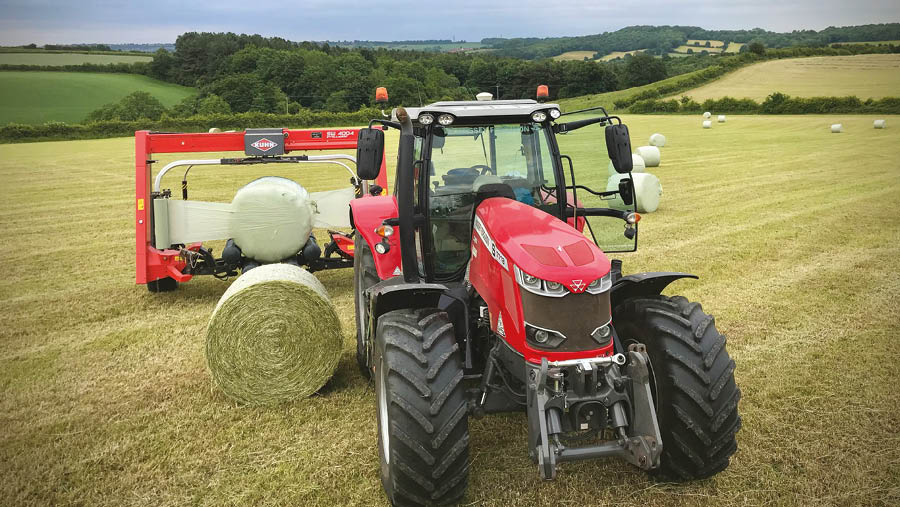
© Martin Hays
Martin: The Kverneland combination E-drill. We had a Maschio power harrow for years and there was nothing wrong with it, but the staggered rotors on the KV make for a quieter, smoother and better job.
Dan: The 12m twin-macerator Mastek dribble bar, which arrived in June after the first round of grant funding.
It’s far better designed than our old 7.5m SlurryKat, the pipes are neatly routed so shouldn’t crack, and the macerators properly chew up the material – rather than just acting as distributors.
Lochan: The bale wrapper and the rolls. When I’m on a job I like, I can happily stick at it all day and night.
Least favourite piece of kit?
The McHale 998 static wrapper. Once you’ve wrapped in the field you’ll never want to wrap at the stack again, and it is soul destroying seeing the farmer turn up with yet another trailer load of bales.
It still does 1,500 bales a year, as we’ve got some small customers with rickety old trailers that are no good for transporting wrapped bales. But once we’ve convinced them to wrap in the field, they’re sold.
Latest purchase?
A 14t Volvo digger for loading muckspreaders, dredging slurry lagoons, big drainage jobs and general winter work. It cost £28,000 with buckets and should keep us busy during quieter periods.
We’ve also got a Massey Ferguson 7S.210 Dyna-VT on the way, which cost £116,000 – despite me vowing never to spend more than £100k on a tractor.
It was due to arrive last November, so hopefully we’ll see it some time this year…
Oldest machine still at work?
A pipe trailer that came when I bought my first umbilical slurry outfit in 1996. I paid to have it galvanised – even though I couldn’t really afford it – but that’s probably why it’s still here now.
It’s had various new drawbars, tyres and hydraulic motors over the years. We’re now toying with the idea of moving to mounted reelers, as a large chunk of our jobs are sub-1,200m.
How long do you keep your machines?
It’s completely flexible – if a cracking deal is thrown our way, or the machine looks like it might start costing us a lot of money, then we’ll look to swap.
A good example is the JCB 536-60. It was only four years old, but the rep offered us £57,000 and a new 538-60 for £72,000, which made it a cheap upgrade. The same model now is well over £90k.
We’re not too fussed about replacing the tractors regularly. We usually keep them to at least 5,000 hours, but the reps know what spec we’re after and tend to give us a shout if there’s something we might be interested in.
At one point, we dropped to a 3,000-hour replacement with the Claas tractors as they were pushing them hard and it cost very little to change.
Next on your wish list?
A decent spec low loader trailer for the digger, preferably with load sensing brakes and hydraulic ramps.
We’ll probably go for a new one, as tidy second-hand models cost almost as much and it’ll be a long-term investment, so we’ll have plenty of time to pay for it. Kane, Chieftan and Grizzly are currently on the list.
Biggest machinery mistake?
A local farmer had some maize drilling to do, and whoever got there first could have the job. I decided to borrow a Kverneland Optima eight-row maize drill from Tim Russon, a contractor in Lincolnshire, and shot off to the farm with the hopper half full.
I tipped it over as I went through Chesterfield, 50 yards from the Bull’s Head beer garden. I was going a shade too fast, the road had a slight adverse camber and the drill’s transport wheels were a bit narrow and unstable – as Tim helpfully told me… afterwards.
I knocked it back into shape and did the job, but it turned out that the main frame was bent and it was a write-off.
Most expensive repair bill?
A Belleville washer, worth all of £10, failed in the 7718’s Dyna-6 transmission, but to get at it was a £4,500 job last summer. Fortunately, B&B lent us a tractor free of charge while it was sorted.
Another big one was when I combined a paint tin, with the paint rock hard inside. The £10,000 insurance job covered a new drum, concave and header auger.
And, last year, Dan tried to pull out of the machinery shed with the baler side panel still open, after he had filled up with string. It’s plastic, but twin-skinned, and cost £3,000 to replace, which is silly money.
Most overpriced spare part?
The baler panel, stripper arms on the knotters at £360 and, frankly, pretty much everything these days. The smaller the part, the bigger the price tag.
Best invention?
The gearbox blew up on our Doda L35 slurry pump, but I couldn’t get hold of a replacement.
At the time, we’d just switched to Case MX 135 tractors that had a torquier engine than we’d been used to, so I decided to try my luck with an L27 gearbox.
I worked out the ratios, did the sums and got it running. As it was higher geared, we could run the pto at 700rpm to get the same impeller speed as before, which dropped fuel consumption massively.
We’ve still got that pump now – it’s the equivalent of Trigger’s broom, but still has some original parts that are now 25 years old.
Workshop essentials?
Gas bottles and the welder, and Lochan to make the brews.
What’s your everyday transport?
I’ve got an SRV – a shi**y red van. It’s a two-wheel-drive Peugeot Partner on 170,000 miles that I’ve had for 10 years, and it carries everything but the kitchen sink in the back.
It’s been pretty faultless, bar the odd MOT fix, but it’s starting to need some more serious welding and might be coming to the end of its time. I like the look of a second-hand VW Caddy.
Dan has a 17-plate Isuzu D-Max, which we picked up two years ago on 68,000 miles for £14,000.
It was our first pickup and now we’re wondering how we managed without one for so long – particularly for pulling the tri-axle flatbed trailer.
Best tractor you’ve had?
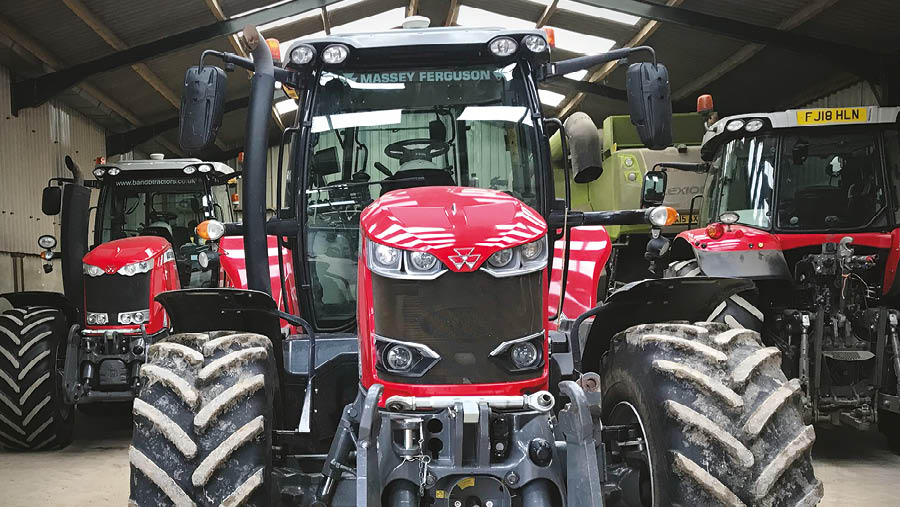
Tractor fleet © Martin Hays
The Case MX 135 is my best… and worst. Most of them were brilliant, but I once bought an S-reg model second-hand from Farmstar and it was an absolute pig.
Something dropped off it nearly every day, it rattled and crunched its way through jobs, and it cost me a fortune to keep running.
I held on to it for 18 months, then traded it in for a McCormick MTX 150 with an Iveco engine. They were bomb-proof tractors – as long as you had a good supply of pto speed sensors on the shelf.
Like the MX 135, it is becoming a bit of a modern classic. I bought a 2004 model on 5,600 hours at the end of last year to go on a feeder wagon.
I also have a soft spot for the Case 956 XL, as it was my first tractor.
Most surprisingly useful feature you’ve found on a machine?
The auxiliary hydraulic dump on the JCB telehandler is brilliant when it comes to coupling attachments.
Most pointless piece of farm technology?
Tractor dashboards have far too much information on them these days, and headland management is a waste of time – you can spend an age setting it up.
The million different ways you can change gear on a Massey tractor also seems pointless. Sometimes it seems that manufacturers add more features for the sake of it.
Biggest machinery bargain?
The Massey 7726 – we saved £44,000 compared with buying a new one, for the sake of 1,000 clock hours. Granted it was four years old, but it only cost us £70k and we’re not bothered about the age.
The fact that the previous owner had to stomach £40/hour in depreciation makes it all the sweeter.
Another good one was my old 12t Richard Western grain trailer. I paid £5,500 for it and, 25 years later, sold it for £5,250 to Matt Redman.
It was a decent spec, with suspended drawbar and hydraulic tailgate, but it had well and truly paid its way.
Kit list
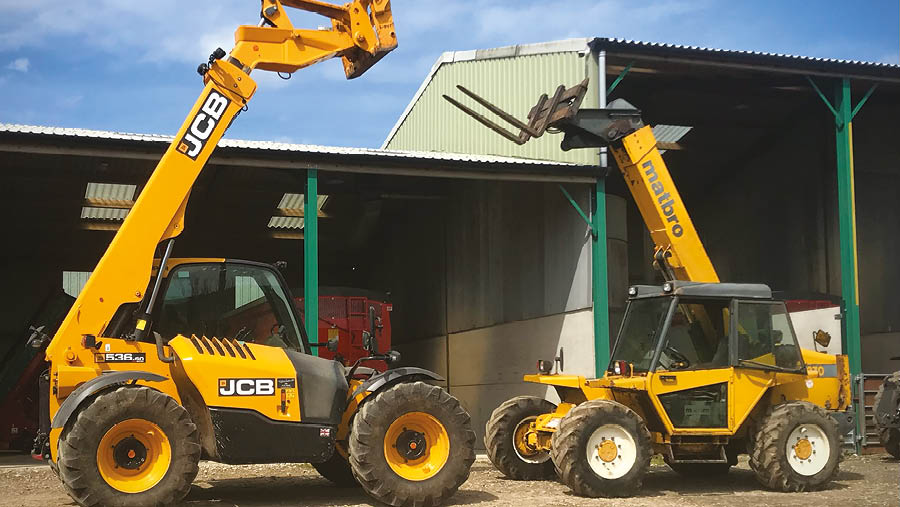
© Martin Hays
- Tractors: Massey Ferguson 7726, 7718 x2, McCormick MTX 150
- Combine: Claas Lexion 630
- Telehandler: JCB 538-60, Matbro TS270
- Forage equipment: Kverneland front and rear mowers, Kuhn eight-rotor tedder, Claas twin-rotor rake, McHale 995 TSR static wrapper, Kuhn SW 4004 wrapper, Kverneland front and rear topper
- Balers: Case IH LB 434, New Holland BB9060
- Muckspreaders: Ktwo 14t rear discharge x2
- Cultivation kit: Lemken five-furrow plough, He-Va Combi-Disc 3m, Vaderstad Carrier 500 5m, Watson Cambridge rolls 6.3m
- Drill: Kverneland E-drill 3m, Moore Unidrill 3m
- Sprayer: Househam AirRide 3500
- Fertiliser spreader: Kuhn Axis 40.2 EMC
- Grain trailers: Ktwo 16t x2, Richard Western 14t x2
- Other: 14t and 5.5t diggers, McConnel 6570T hedgecutter
The Farmers Weekly 2023 Contractor of the Year
Farmers Weekly 2023 Contractor of the Year is sponsored by Rural Asset Finance.
Enter yourself or nominate someone now on our Awards website.


